#suskityrannus
Text
Suskityrannus vs Maip
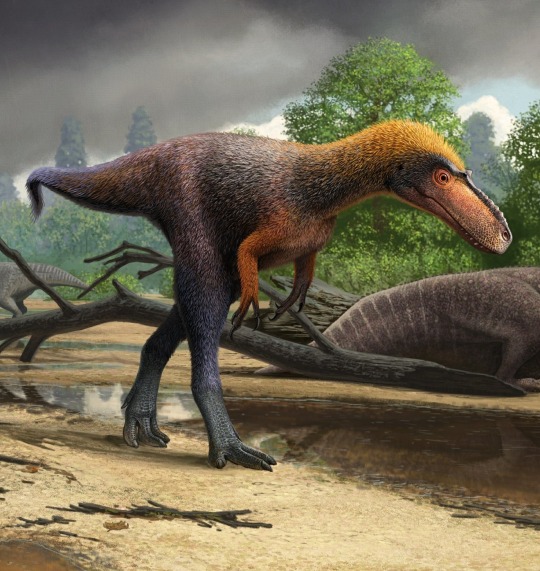

Factfiles:
Suskityrannus hazelae

Artwork by Andrey Atuchin, written by @zygodactylus
Name Meaning: Hazel Wolfe’s Coyote Tyrant
Time: 92 million years ago (Turonian stage of the Late Cretaceous)
Location: Moreno Hill Formation, Zuni Basin, New Mexico
When you follow the progress of paleontology long enough, you start to see things that were previously left undescribed actually get names and the respect they deserve - whether its the “putative screamer” Anachronornis or the “Zuni Coelurosaur” Suskityrannus, you’re sure to get a nice moment and a sense of satisfaction from it. Suskityrannus has been well known for a while due to it being featured in both When Dinosaurs Roamed America as well as Planet Dinosaur. Thought at various times to be a basal Coelurosaur or Tyrannosauroid, its official description placed it somewhat derived within Tyrannosaurs, showcasing the evolution of the Tyrannosaur group as it transitioned from the smaller more speedy forms (like Suskityrannus) to the giant murder birds we know and love later in the Cretaceous. In fact, Suskityrannus lived in an ecosystem that highlighted its changing world, with many early representatives of the later iconic North American Cretaceous ecosystems showing up in early forms in Moreno Hill. Suskityrannus was about one meter tall and three meters long, and already had many adaptations known from later tyrannosaurs. In the forested coastal ecosystem at Moreno Hill, Suskityrannus would have been neighbors with Zuniceratops, Nothronychus, Jeyawati, ankylosaurs, fish, and turtles.
Maip macrothorax

Artwork by @i-draws-dinosaurs, written by @zygodactylus
Name Meaning: Long-chested Shadow of Death
Time: 72 to 66 million years ago (Maastrichtian stage of the Late Cretaceous)
Location: Chorrillo Formation, Patagonia, Argentina
Megaraptors, a group not even really understood a few decades ago, just keep having more and more interesting members added to this group - Maip, a recent addition known from many bones of the trunk and tail, help fill out more of this picture with remains not known from other Megaraptors, and als having the most complete Megaraptor skeleton known. Maip was also interesting in having a very long, thick torso, leading to its specific name. It probably reached 9 to 10 meters in length in life, making it the largest Megaraptor known (literally reaching carcharodontosaurid size), and it may indicate that megaraptors rose to high-level predator status as other top predators went extinct in the region. It had a respiratory system similar to modern birds, with unidirectional air flow, much like other Saurischian dinosaurs. Living in southernmost South America, Maip would have had to deal with a variety of harsh climates, and may have been covered in feathers in order to keep warm. In addition to mosasaurs, snakes, turtles, mammals, fish, and frogs, Maip lived with other dinosaurs such as Nullotitan, Kookne, Yatenavis, and Isasicursor.
DMM Round One Masterpost
#dmm#dinosaur march madness#dmm round one#dmm rising stars#palaeoblr#dinsoaurs#paleontology#bracket#march madness#polls#suskityrannus#maip
265 notes
·
View notes
Text


more old paleostream stuff
also thats not thalassiodracon thats thalassodraco my bad
#my art#paleo#dinosaur#paleostream#tiktaalik#saichania#sinosaurus#thalassodraco#elmisaurus#anteosaurus#suskityrannus#paleo art#paleoart
18 notes
·
View notes
Text

i look like this when you hurt me this is who you hurt
2 notes
·
View notes
Text
Dinosaur Profile: Zuniceratops

Zuniceratops is a rather special ceratopsian. Despite not being as famous as some of its more famous relatives such as Triceratops or Styracosaurus, it played an important role in the evolution of ceratopsians. Particularly in North America, since they might provide an answer to an old question.
Background:
Zuniceratops christopheri ('Zuni-horned face') was found in the Moreno Hill Formation of New Mexico, America by Christopher James Wolfe in 1996. Dated to have lived around 93 to 91 million years ago during the Late Cretaceous, it's primarily known from the remains of 5 animals and a single skull.

As seen in the picture here, North America looked pretty different from the world today. A shallow interior sea effectively cut the continent in half. New Mexico was one of the states that was partially swamped by this interior sea. The areas that weren't covered by water became prime real estate for acres of coastal forests and swamps, all teeming with various species with flora.

Prehistoric New Mexico may have looked similar to this image from Borderland State Park from Massachusetts. With a diverse mix of ferns, honeysuckles, figs, and other types of vegetation to feed on, it would've been the perfect backdrop for various species of herbivorous dinosaur to thrive.
Evolutionary History:
Despite being native to North America, the ancestors of Zuniceratops actually hailed from Asia. It was believed that the first ceratopsians to have made the crossing over land bridges in the Bering Strait roughly during the mid Cretacous (112 to 100 million years ago to be precise), were relatively small. No larger than a rabbit. They were part of a lineage that was closely related to Psittacosaurus, a family that were bipedal and had only the faintest trace of a frill.

As you can see from the image by Brian Engh, they were far from the giants we would later know them as. The species shown here, Aquilops americanus, was believed to have been the first ceratopsian to make it to North America.
But they wouldn't stay small for long. When the land bridges were swallowed up by rising sea levels, the ceratopsians in prehistoric America began to balloon in size. The frills became more pronounced, and the first horns evolved. Which leads us to Zuniceratops.
Description:
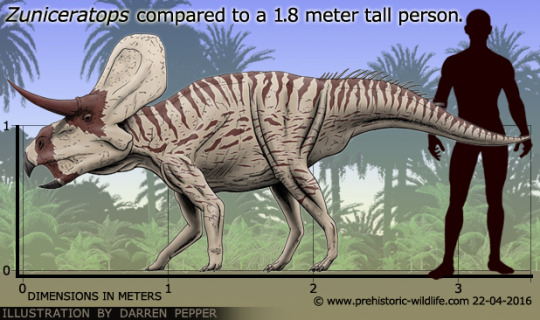
At 7.2 ft long and weighing in at least 175 kilograms by estimations, Zuniceratops was roughly the size of a cow. Fairly small by ceratopsian standards. But compared to its diminutive ancestors, it has evolved dramatically in both posture and headgear. The frill itself and horns are fairly mundane compared to later species, having two horns above each eye without a nasal horn. This bares a striking resemblance to the later Chasmosaurs, Triceratops in particular.
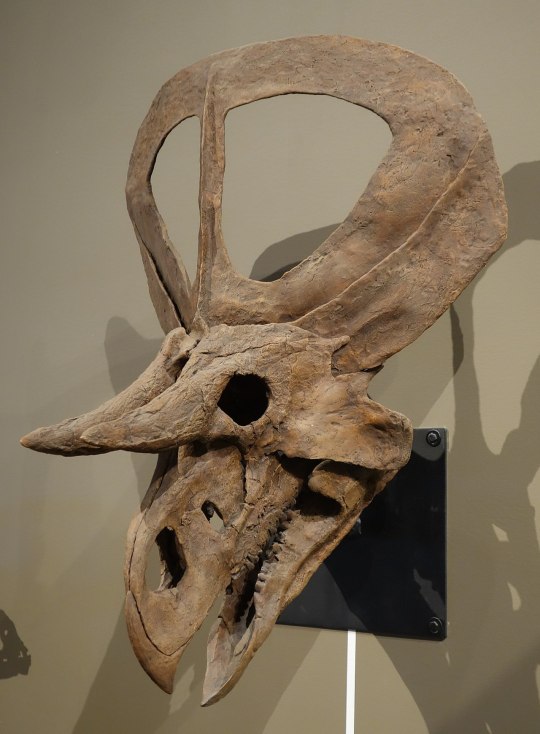
The frill has become significantly more developed. As you can see in this photo of a reconstructed skull, the frill had gaping holes in it to lighten the load. This would've made it less dense than the later Chasmosaur frills (such as Triceratops) and more in line with typical Centrosaur frills (like Styracosaurus). In order to further handle the increased weight, Zuniceratops is a strict quadruped with all four legs supporting it.
What exactly the frill was used for is unclear. The most popular theory nowadays was that males used it to court females during the mating season. Like dear and other herbivores today, healthier and stronger males may have more developed frills and thus would be more successful at both attracting mates and warding off rivals. Due to the frill's lack of density, head to head battles like in later Chasmosaurs may have been a rarity to avoid injury. But this doesn't discount the possibility if two rivals aren't able to get the other to back down.

The reasoning must've been worth the trade-off for speed. For prehistoric New Mexico had a predator called Suskityrannus: a primitive tyrannosauroid. While believed to have been significantly smaller and lighter (the only specimen known is believed to have been a juvenile), it would've posed a threat to Zuniceratops juveniles and weaker animals, such as elderly, injured, or ill. Especially if Suskityrannus hunted in gangs like wolves. Zuniceratops would still be an imposing prey item: their great bulk and sharp horns (quite similar to the more combat oriented Chasmosaur horns down the line) may have been an effective deterrent to predators. Additionally, Zuniceratops may have congregated in herds for further protection, similar to more advanced ceratopsians.
What it does retain is the sharp beak that evolved with its ancestors. Perfect for snapping up ferns and low-lying plant species, allowing it to peacefully coexist with other herbivorous dinosaur species, including the bizarre therizinosaur Nothronychus, which probably used its long neck to feed up in the trees.
North American Forerunner:

While the ancestors of Ceratopsians undoubtedly originated from Asia, there has been debate on where proper Ceratopsians (of Ceratopsidae as opposed to the various other families) themselves originated from. Specifically, whether the more advanced Ceratopsians came from Asia and migrated to North America, or evolved in North America.
Zuniceratops may provide an answer. Asone of known basal Ceratopsians in the world (of 1996) that shows many similarities with more advanced, it's been used by many as proof that ceratopsians originated in North America. Advanced Asian species may have migrated to Asia from North America via land bridges, similar to how Asian Pleistocene megafauna (and humans) migrated over a land bridge in the Bering Strait.
Though in recent years, this hypothesis has come under scrutiny with the discovery of the closely related Turanoceratops. Also around dated to 90 million years old, Turanoceratops is an Asian species. With both species closely related, it has raised the possibility that basal Ceratopsians actually hailed from Asia and migrated to North America.
Regardless of whether or not it represents the continent where the more iconic Ceratopsians originated from, Zuniceratops still remains as the oldest known basal Ceratopsoid in North America.
Pop Culture:

Due to its somewhat plain appearance compared to later Ceratopsians, Zuniceratops has a very minimal presence in the wider community. It did however make a starring appearance in a segment of When Dinosaurs Roamed America, where it was depicted as living in herds, competing for females, fending off an unidentified species of Dromaeosaur, and escaping a forest fire.

It also appeared in the 18th wave of cards for the collectible trading card arcade game Dinosaur King. It is depicted as a Lightning-type dinosaur, similar to the rest of its kind depicted in-game.
Sources:
Zuniceratops (prehistoric-wildlife.com)
Ancient fossilized turtle unearthed in New Mexico - UPI.com
Discovering Aquilops Americanus – Sam Noble Museum (ou.edu)
Small T. rex Relative Found in New Mexico: Suskityrannus hazelae | Paleontology | Sci-News.com
▷ ZUNICERATOPS, the dinosaur with horns over its eyes | Dinosaurs (yourdinosaurs.com)
Turanoceratops (prehistoric-wildlife.com)
#zuniceratops#ceratopsoid#ceratopsian#long post#dinosaur#dinosaurs#when dinosaurs roamed america#dinosaur king#not an expert so feel free to correct me on this#also not sure if this will be a recurring thing#and i swear this is not meant to rip off anyone
21 notes
·
View notes
Text
Episode 410: A new tyrannosauroid from Idaho
I Know Dino Podcast Episode 410: A new tyrannosauroid from Idaho that was smaller than Moros, but bigger than Suskityrannus; plus a new therizinosaur from Hokkaido; and a study of the soft pads on sauropod feet
Episode 410: A new tyrannosauroid that was smaller than Moros, but bigger than Suskityrannus; plus a new therizinosaur from Hokkaido; and a study of the soft pads on sauropod feet
News:
A new unnamed tyrannosauroid was discovered in Idaho which was smaller than Moros, but bigger than Suskityrannus sourceThere’s a new therizinosaur named Paralitherizinosaurus that was found in Hokkaido, Japan…

View On WordPress
2 notes
·
View notes
Text

Zuniceratops: Cara con cuernos de la cuenca de los Zuñi
Zuniceratops es un género representado por una única especie de dinosaurio ceratopsiano ceratopsoide, que vivió a mediados del período Cretácico, hace aproximadamente 94 millones de años, en el Turoniense, en lo que hoy es Estados Unidos y México. Vivió 10 millones de años antes de la familia de los conocidos ceratópsidos cornudos y da un importante acercamiento a los ancestros de dicho grupo.
Descripción:
Zuniceratops tenía aproximadamente 3 a 3,5 metros de largo y un metro de altura a las caderas. Es probable que pesara 100 a 150 kilogramos. La cresta detrás de la cabeza poseía fenestras (aberturas en el hueso) pero estaba desprovista de epoccipitales. Es el primer ceraptosio conocido en tener cuernos sobre las cuencas oculares (no así sobre la nariz) y el más antiguo conocido de Norteamérica. Este conjunto de cuernos se alargaba con la edad.
Dentro del Remake de Dinosaurio
Estos ceratopsianos podrían aparecer en los nidales, junto con el Neimongosaurus; haciéndonos entender que a diferencia de la cinta original, el Valle de los Nidales ya estaría previamente poblado por dinosaurios y otras criaturas.
Aparición en Medios
Este temprano dinosaurio con cuernos apareció por primera vez en la película documental de 2001 When Dinosaurs Roamed America, que tuvo lugar a mediados del Cretácico, donde se mostró como presa de dromeosaurios no identificados (muy probablemente Suskityrannus). Zuniceratops también apareció en una ilustración de Luis V. Rey en los créditos al final de la película Walking with Dinosaurs: The 3D Movie, desplazándose junto a los nombres del elenco Tiya Sircar y Skyler Stone.
1 note
·
View note
Text

Dinovember Day 2: Suskityrannus & Zuniceratops
311 notes
·
View notes
Text
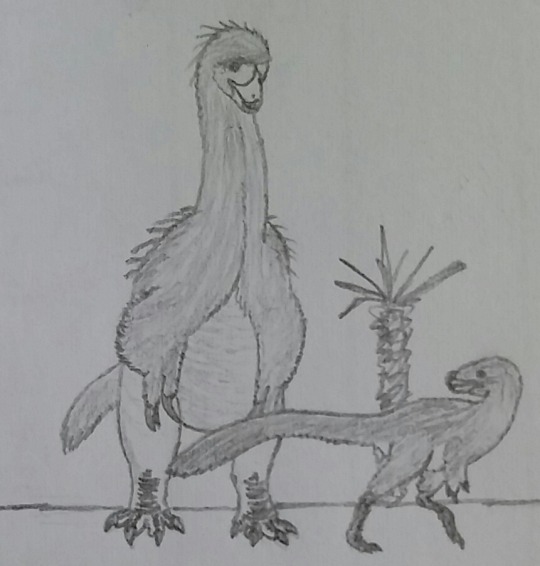
Nothronychus & Suskityrannus
9 notes
·
View notes
Photo

A selection of new dinosaurs named in 2019.
#Dinosaurs#Palaeoblr#2019#Birds#Birblr#Heracles#Asfaltovenator#Gnathovorax#Suskityrannus#Convolosaurus#Vespersaurus#Hesperornithoides#Conflicto#Bajadasaurus#Avimaia#Eofringillirostrum#Elektorornis#Ambopteryx#Protodontopteryx
18 notes
·
View notes
Link
“Scientists have identified a new cousin to the Tyrannosaurus rex 21 years after its fossilized bones were discovered in New Mexico. Sterling Nesbitt, a paleontologist at Virginia Tech, made the find when he was just 16. The new dinosaur is called Suskityrannus hazelae, named after the Zuni word for coyote.
Nesbitt's discovery came on land once populated by the Native American tribe. The duck-billed dinosaur dates back 92 million years, about 20 million years before the T. rex stomped the Earth.
The newly discovered cousin — which was three times longer than it was tall — weighed between 45 and 90 pounds, almost nothing compared to the nine-ton king of the dinosaurs. Suskityrannus hazalae isn't the first or even smallest of the Tyrannosaurus family tree, but Nesbitt said it provides the best example of how this family of modest-sized dinosaurs evolved into the towering T. rex.”
#Suskityrannus#Suskityrannus hazelae#News#Science#Palaeontology#Theropod#Dinosaur#Prehistoric#Mesozoic#Cretaceous#Extinct#Info#Information#Article#Art
318 notes
·
View notes
Note
I think this is the first DMM where I've been actively campaigning for a genus (Suskityrannus) and trying to drum up support for it, I know its chances are slim since Maip is currently winning pretty well but man I want to see how far the coyote tyrant can go
I love Suski! I try to not campaign too much since I run the whole thing, but me as a person (not me the runner of adad) absolutely supports the Long Legged Rexy!
8 notes
·
View notes
Link
#tyrannosaurus rex#evolution#palaeontology#tiny tyrannosaurus#science#science news#Suskityrannus hazelae#new species#dinosaur#life
10 notes
·
View notes
Text
CAN I GET A HELL YEAH FOR THE SUSKITYRANNUS HAZELAE?
MY INNER DINOSAUR NERD IS SOBBING I ALREADY LOVE THIS TINY LIL SHIT.
9 notes
·
View notes
Link
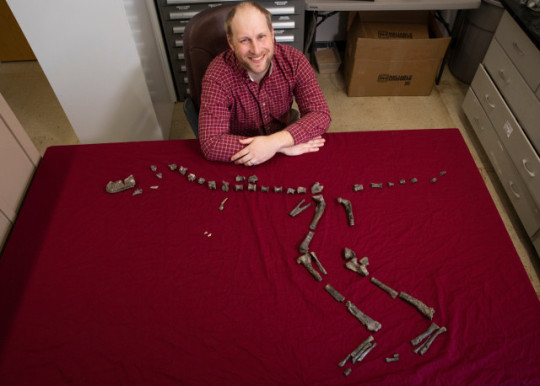

An article published in the journal "Nature Ecology & Evolution" reports the identification of a new species of tyrannosauroid that lived about 92 million years ago, in the Mid-Cretaceous period. A team of researchers led by Sterling Nesbitt of Virginia Tech named this species Suskityrannus hazelae completing a work begun in 1997, when the first fossils were discovered but weren't identified at the time. It was a carnivore but with its height of less than one meter it was much smaller than its far more famous distant cousin, the T.rex.
1 note
·
View note
Text

Did a quarantine doodle of Suskityrannus today! I've been pretty interested in this genus ever since it was officially described
16 notes
·
View notes
